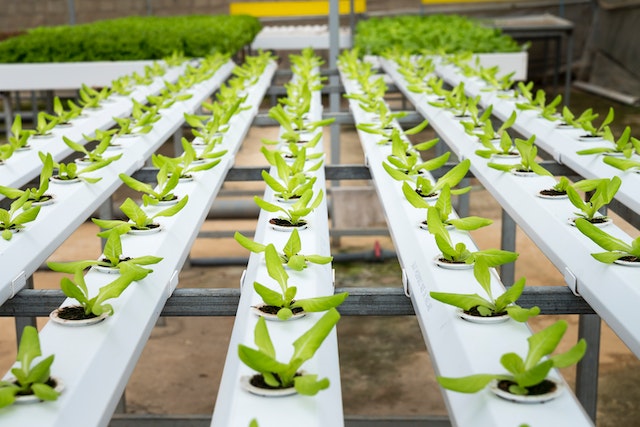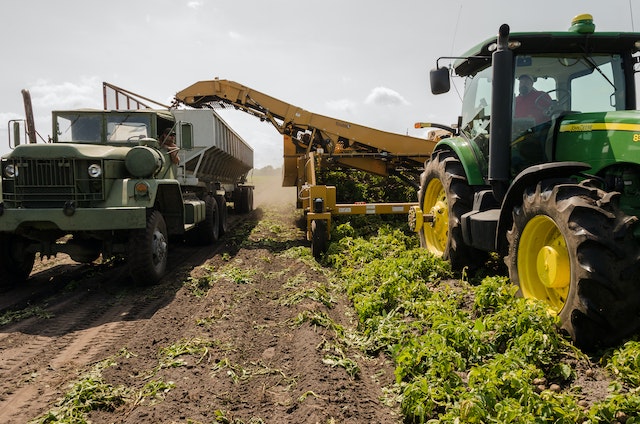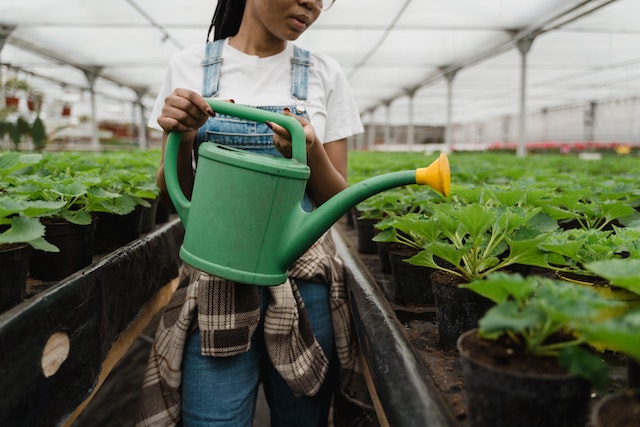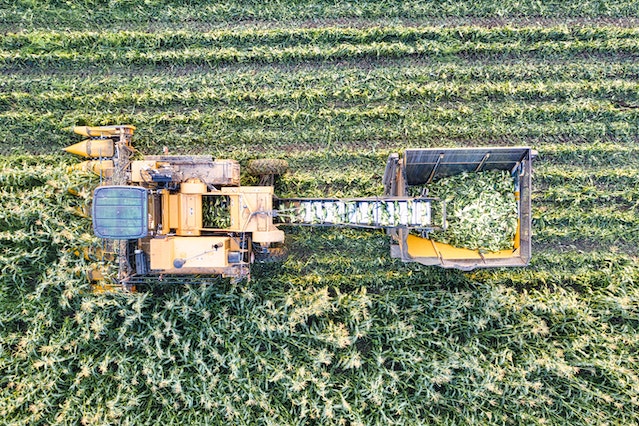
The world finds itself at a critical juncture, where the pressure to provide sufficient and nutritious food for all is exacerbated by the escalating frequency and intensity of extreme weather events. As our planet warms and weather patterns become increasingly erratic, traditional agricultural systems face unprecedented challenges. The concept of climate-resilient agriculture draws on innovative technologies, traditional knowledge, and adaptive strategies, this approach aims to build agricultural systems that can withstand, adapt to, and recover from climate-related stressors.
Gone are the days when food security could be ensured solely through conventional farming methods. Climate-resilient agriculture demands a paradigm shift, one that encompasses a holistic view of ecosystems, inputs, and practices. From small-scale traditional farming communities to large-scale commercial operations, there is an urgent need to integrate climate-smart techniques that enhance productivity, conserve natural resources, and preserve biodiversity.
Understanding Climate Change Impacts on Agriculture
The world is witnessing an alarming rise in the frequency and severity of extreme weather events. Floods, droughts, heatwaves, and erratic rainfall patterns have become distressingly common. These phenomena are direct consequences of climate change, caused primarily by human activities such as deforestation and the burning of fossil fuels. As the Earth’s temperature continues to rise, the impacts on agriculture are becoming increasingly evident.
Increased Vulnerability to Pests and Diseases: Rising temperatures and changes in precipitation patterns create favorable conditions for pests and diseases to thrive. Insects and pathogens once limited to specific regions are now expanding their range, posing a significant threat to crop health and productivity.
Water Scarcity and Erratic Rainfall: Changing climate patterns disrupt traditional farming practices reliant on predictable rainfall patterns. Droughts become more frequent, causing water scarcity and reducing agricultural output. Erratic rainfall leads to crop failures and reduced yields, forcing farmers to seek alternative water sources and adapt irrigation practices.
Soil Degradation: Extreme weather events, such as heavy rains and strong winds, contribute to soil erosion. Increased flooding, combined with poor land management practices, washes away valuable topsoil and depletes essential nutrients. Without adequate soil conservation measures, agricultural productivity declines, exacerbating food insecurity.
Altered Growing Seasons and Phenological Shifts: Shifts in temperature and precipitation patterns disrupt traditional growing seasons. Unpredictable weather events cause mismatches between plant growth stages and the availability of pollinators. Farmers must adapt planting and harvesting schedules to account for these changes, which require a deeper understanding of local climatic conditions.
The Need for Climate-Resilient Agriculture

In the face of mounting climate challenges, the need for climate-resilient agriculture has never been more urgent. Conventional farming methods, once thought to be sufficient, are proving inadequate in the face of a changing climate.
To safeguard food security and mitigate the risks posed by extreme weather events, we must embrace a paradigm shift in agriculture. Climate-resilient agriculture takes on a holistic approach that addresses the vulnerabilities faced by our current systems.
Climate-resilient agriculture aims to enhance productivity in the face of a changing climate. By incorporating innovative technologies, adaptive practices, and sound ecological principles, we can ensure that our agricultural systems are better equipped to withstand and recover from climate-related stressors. This approach acts as a shield, safeguarding crops from the risks posed by rising temperatures, erratic rainfall, and increased incidence of pests and diseases.
A Balancing Act
Through implementing practices such as agroforestry, conservation agriculture, and water management techniques, we can protect and enhance the health of our soils, mitigate water scarcity, and promote the conservation of diverse ecosystems. Striking a balance between agricultural production and environmental stewardship is essential for the long-term sustainability of our planet.
Empowering Farmers
Thorugh climate-resilient agriculture, farmers are empowered with the knowledge and tools necessary to adapt and thrive in a changing climate. By incorporating traditional knowledge with modern scientific advancements, we can enhance their capacity to manage risks, build resilience, and make informed decisions based on local climatic conditions. Farmers are the backbone of our food systems, and by investing in their resilience, we invest in the resilience of our food supply.
Collaborative Efforts

Climate-resilient agriculture is not a solitary endeavor; it requires collaboration between governments, research institutions, farmers, and local communities. Building climate-resilient communities means engaging stakeholders at all levels.
It also requires implementing policies that support sustainable farming practices, and providing access to resources, training, and financial incentives. By working together, we can build a future where communities are equipped to withstand the challenges posed by climate change and ensure food security for all.
Strategies for Climate-Resilient Agriculture
One effective strategy for climate-resilient agriculture is crop diversification. This involves growing a variety of crops with different characteristics that can withstand a range of environmental conditions. By diversifying their crops, farmers can reduce the risks associated with climate change. Diverse crops offer more resistance to pests and diseases, mitigate the impacts of extreme weather events, and improve overall farm resilience. Additionally, a diverse crop portfolio contributes to healthy ecosystems and preserves biodiversity.
Sustainable Solutions for Water Scarcity
Water scarcity is a pressing challenge faced by farmers in a changing climate. Adopting sustainable water management techniques can help mitigate this issue. Techniques such as drip irrigation, rainwater harvesting, and efficient water storage systems can conserve water and ensure its efficient use. By using water resources wisely, farmers can cope with droughts, irregular rainfall patterns, and increased evaporation rates. Successful implementation of these techniques promotes water resilience, maximizes agricultural productivity, and improves overall water security.
Embracing Sustainable Farming Practices
Conservation agriculture is a set of practices that seeks to preserve natural resources, promote soil health, and enhance biodiversity. By minimizing soil disturbance, maintaining soil cover, and using crop rotations, farmers can improve soil structure and fertility. These practices reduce erosion, conserve moisture, and enhance the organic matter content, leading to increased productivity and resilience. Conservation agriculture also promotes the use of organic inputs and minimizes chemical use, reducing environmental impacts and preserving biodiversity.
Enhancing Resilience Through Trees
Agroforestry is an approach that integrates trees into agricultural systems, offering numerous benefits for climate-resilient agriculture. Trees provide shade, reducing heat stress on crops, while also mitigating soil erosion and improving water infiltration. Their roots stabilize the soil, preventing nutrient runoff and enhancing water retention. Additionally, trees contribute to biodiversity conservation, provide habitat for beneficial insects, and contribute to the overall health and resilience of the ecosystem. By incorporating trees into their farms, farmers can create a more resilient and sustainable agriculture system.
Climate-Smart Technologies
Advancements in technology offer immense potential for climate-resilient agriculture. Climate-smart technologies, such as precision farming, remote sensing, and weather forecasting, enable farmers to make informed decisions based on real-time data. These technologies assist in managing resources effectively, optimizing inputs, and adapting to changing conditions. By harnessing innovation, farmers can optimize productivity while minimizing environmental degradation, enhancing overall farm resilience in the face of climate change.

Challenges and Barriers to Climate-Resilient Agriculture
Implementing climate-resilient agriculture practices is not without its challenges and barriers. While the benefits are clear, there are several factors that hinder the widespread adoption of these innovative strategies. Let us explore the significant challenges and barriers faced by farmers, communities, and governments in transitioning towards climate-resilient agriculture.
1. Limited Access to Resources and Technology
One of the primary obstacles to climate-resilient agriculture is the limited access to crucial resources and technologies. Many small-scale farmers, especially those in developing regions, lack the financial means to invest in climate-smart technologies. The high upfront costs of things like precision farming equipment or sustainable irrigation systems can be prohibitive, preventing farmers from adopting these practices.
2. Lack of Knowledge and Awareness
A significant barrier to the implementation of climate-resilient agriculture is the lack of knowledge and awareness among farmers. Traditional farming methods are deeply ingrained in many communities, making it challenging to introduce and persuade farmers to embrace new practices. Education and training programs are essential to build awareness, provide practical guidance, and empower farmers to make informed decisions about climate-resilient agriculture.
3. Policy Frameworks and Institutional Support
The absence of supportive policy frameworks and institutional support hampers the transition to climate-resilient agriculture. Governments play a crucial role in providing incentives, subsidies, and regulatory frameworks that foster the adoption of innovative agricultural practices. Bureaucratic hurdles, the absence of financial incentives, and a lack of coordination between various government departments can hinder progress.
4. Market Barriers
The existing market structures often prioritize quantity over sustainability and resilience. The demand for climate-resilient agricultural products needs to be encouraged and supported by consumers, retailers, and the food industry. Farmers who adopt climate-smart practices should receive fair compensation for their efforts and be able to access reliable markets that value and promote sustainable agricultural products.
5. Climate Uncertainty and Risk
In an ever-changing climate scenario, farmers face uncertainty and risk associated with adopting new practices. Climate impacts, such as changing rainfall patterns and increased frequency of extreme weather events, pose challenges in determining the best course of action. The lack of accurate and localized climate forecasts can make it difficult for farmers to plan and make informed decisions about their farming practices.

6. Cultural and Social Factors
Cultural and social factors can also act as barriers to climate-resilient agriculture. Traditional beliefs and practices may resist change, making it challenging to introduce new farming methods. Additionally, gender disparities in access to resources and decision-making can limit the adoption of climate-smart practices. Recognizing and addressing these cultural and social barriers is essential for promoting inclusive and sustainable agricultural systems.
Collaborative initiatives that integrate research, education, policy support, and financial incentives are crucial for driving the widespread adoption of climate-resilient agriculture. By addressing these barriers and fostering an enabling environment, we can create a future where agriculture thrives in the face of climate change, ensuring food security and sustainable livelihoods for generations to come.


